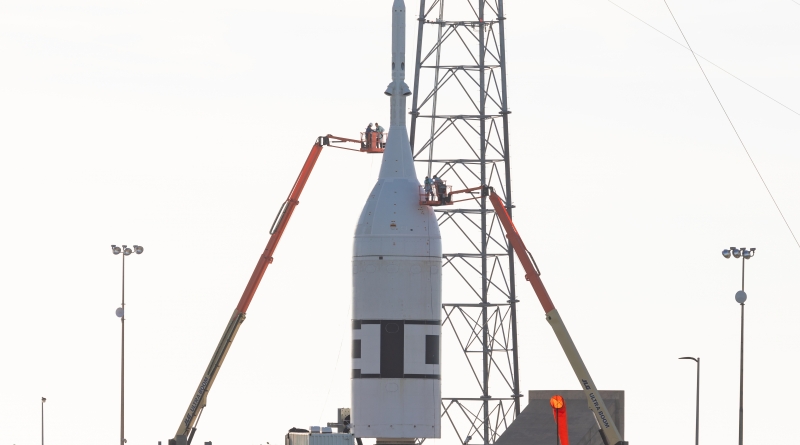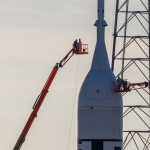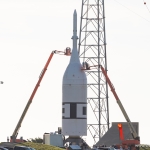What Cocoa Beach Viewers Will See During Tomorrow's Orion Ascent Abort Test Tomorrow

CAPE CANAVERAL AIR FORCE STATION: Anyone on Cocoa Beach tomorrow at 7AM will witness a fascinating show during the unmanned Orion Ascent Abort Test 2. The four-hour launch window begins at 7 AM on Tuesday July 2, 2019 with a back-up launch day of July 3, 2019.
This will be the second test of the Launch Abort System (LAS). While the first test was from a test stand, this launch is going to be from a ascending Orion capsule that is still in the atmosphere - there will be tremendous forces on the vehicle during the test, according to Mark Kirasich, Orion program manager.
Jenny Devolites, Ascent Abort-2 test conductor explains what to watch for during the launch:
- A first stage rocket provided by Northrop Grumman and the United States Air Force will lift the Orion Crew Capsule for 55 seconds to a planned altitude of 31,000 feet. The rocket provides 500,000 pounds of thrust. NASA had to add 100K pounds of ballast to have the rocket flying at the proper speed.
- The LAS engines will light to pull the Orion Crew Capsule away from the first stage. A 3-foot-tall separation ring will fall away. During this 27 second burn, attitude control motors will attempt to turn the Orion Crew Capsule so the heat shield is facing the Earth.
- After 27 seconds, more engines will fire to jettison the LAS from the Orion capsule.
- Six pairs of flight data recorders will jettison from the Crew Capsule every 10 seconds. The first pair should jettison 102 seconds after launch. All 12 of these data recorders will float and may come ashore. If you find one, call the number on the data recorder. The data recorder
- Tomorrow's test does not include parachutes since they have already been tested. Without any way to slow down, the crew capsule is expected begin to tumble and to impact the ocean at 300 MPH, break up, and sink. This should occur about 7 miles due east of Launch Complex 46.
- The first stage and the jettisoned launch abort system will splash down about 1 mile further out to sea than the Crew Capsule.
Randy Bresnik, NASA astronaut explained what a crew member would feel during the abort.
The crew will experience 7G force in the Z direction. 7G will get your attention. Because you are accellerating in the Z-direction, the blood will be pulling out of your head. We've practiced this at NASA. The good news is that since the abort happens in the first few minutes, we have not been in space in 5 months. After the initial pull away, it will be a pretty benign ride on the parachutes. The Soyuz capsule experiences 5-6G during an abort. The Orion abort will feel like 1.5 to 2 elephants standing on your chest.
The abort could be signaled by the SLS rocket, by the Orion Crew Capsule, or manually by the astronauts on board. If the abort is triggered by either of the automated methods, a sensor on board the crew capsule would alert the crew of the impending abort.
Bresnick spoke about the recent Soyus abort.
You have to prepare for it, even though it is a low chance of happening. It had been 35 years since a launch abort. But the Russians reacted as as if they expected it every launch for the last 35 years.
Mark Kirasich explained that with Vice President Pence's announcement that Artemis should land on the moon by 2024, everyone's focus has sharpened. Timelines have shortened. They are going ahead with the Orion Ascent Abort Test now in order to get the data they need, instead of waiting for parachutes to be ready.
Photos

Stunning, full color photo book covering every east coast launch spanning 2014-2015, including the first-ever powered landing of a SpaceX Falcon 9 rocket.
More Info





